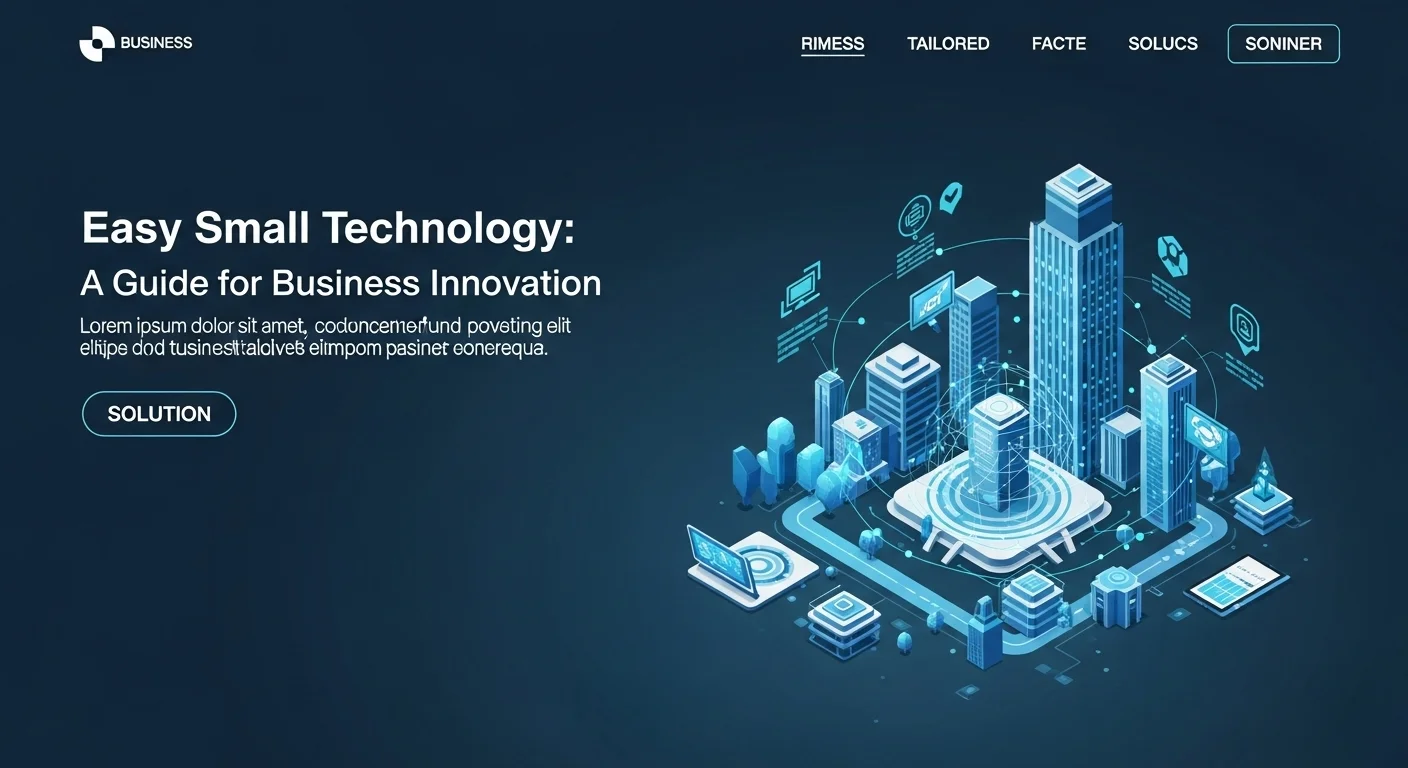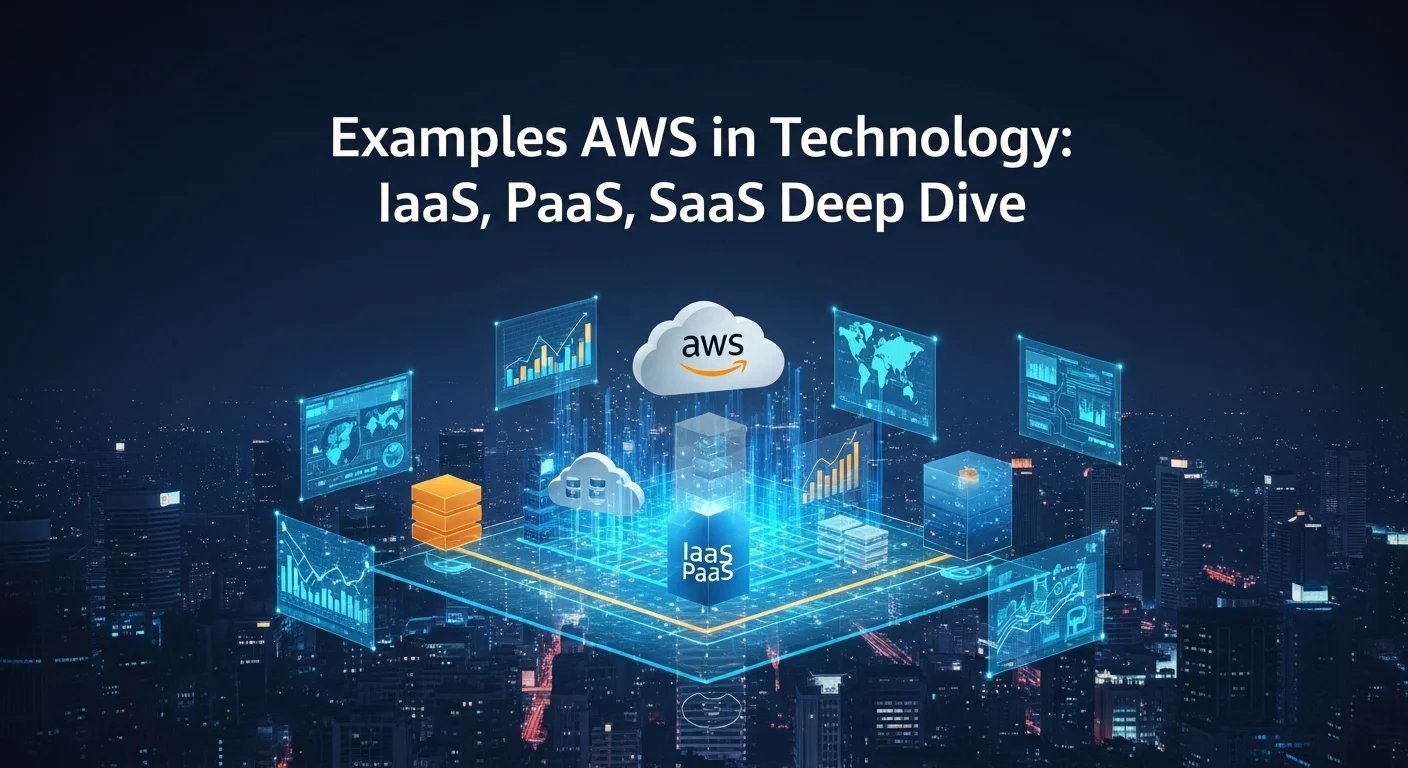Launch Your Dream Business for Less: Top Tech-Savvy Ideas for 2025

Executive Summary
Over the last fifteen years, I've watched the world of entrepreneurship completely transform. I remember when starting a business meant taking out a massive loan for an office, inventory, and staff. It was a huge, terrifying risk. Today, things are different. The barrier to entry has crumbled, all thanks to technology. The idea of a 'low-cost business' isn't just a fantasy anymore; it's the reality for millions of people I've seen turn a passion project into a full-time career from their kitchen table.
This guide is a collection of my experiences and observations, designed for anyone who has a great idea but not a lot of capital. We'll explore how powerful tools like cloud computing, artificial intelligence, and digital platforms have made it possible to start and run a thriving business with minimal investment. From simple e-commerce stores and freelance consulting to building your own app without code, we’ll dive into practical, low-cost business ideas that are perfect for 2025. My goal is to give you actionable insights and a clear roadmap, proving that with the right technology, a brilliant idea is far more important than a big budget.
Table of Contents
Table of Contents
- 1. What Does a "Low-Cost Business" Really Mean Today?
- 2. A Complete Guide to Low-Cost Tech Business Ideas
- 3. Essential Tips for Growing Your Lean Business
What Does a "Low-Cost Business" Really Mean Today?
The phrase 'low-cost business' used to mean something completely different. Twenty years ago, it might have referred to a small shop with low rent. Today, it describes a business model built on technology, one that can be launched and operated with incredibly small financial investment. I've seen it firsthand: these new ventures cleverly use technology to sidestep the traditional costs that once made starting a business so difficult. They are built on a foundation of digital tools, online platforms, and innovative ideas that don't require physical assets.
This shift is so important because it's democratized entrepreneurship. It means anyone with a skill and an internet connection can build something meaningful. Technology is the great equalizer here, giving a solo entrepreneur in a small town access to a global market, powerful marketing channels, and sophisticated software that once belonged only to large corporations. The core of this revolution comes from a few key places. Cloud computing, for example, is a game-changer. Instead of buying expensive servers and hiring an IT team, services like Amazon Web Services (AWS) or Google Cloud let you 'rent' massive computing power, paying only for what you use. It's like having access to a supercomputer without the billion-dollar price tag. Then you have Software-as-a-Service (SaaS), which gives you affordable subscriptions to incredible tools for accounting (QuickBooks), customer management (HubSpot), or project planning (Asana). These technologies handle the heavy lifting in the background, freeing you up to focus on what you do best: serving your customers.
The Real-World Impact of Tech-Powered Businesses
The rise of these affordable, tech-driven businesses has a ripple effect that goes far beyond just one person's success. It sparks incredible innovation. When the cost of trying something new is low, people are more willing to experiment with bold ideas. This creates a more vibrant, competitive market, which is great for all of us as consumers. For many, it's also a direct path to financial freedom. The entire gig economy, with platforms like Upwork and Fiverr, was born from this trend, allowing people to monetize their skills on their own terms. I've personally hired talented freelancers from these platforms for everything from graphic design to complex data analysis.
More than that, this movement strengthens local communities. Someone can start a digital marketing agency from their home office and serve clients across the globe, bringing new money into their local economy. As we look ahead to 2025, the most successful business ideas will be those that serve very specific, niche markets. Technology, through targeted digital ads and data analytics, makes it possible to find and connect with these dedicated customers, no matter where they are. This is where the magic happens—where technology and entrepreneurial spirit combine to create opportunities that were pure science fiction a generation ago. Starting a business today isn't about finding a shortcut; it's about smartly using the incredible leverage that technology provides.
One of the biggest wins here is the reduction of risk. I've spoken to countless entrepreneurs who bootstrapped their companies, funding them entirely from the revenue they generated in the early days. They didn't have to bet their life savings or take on massive debt. This financial freedom makes entrepreneurship a realistic path for so many more people. And the skills you need? They're more accessible than ever. With platforms like Coursera, Udemy, and even YouTube, you can learn to code, master digital marketing, or become a cybersecurity expert at little to no cost. It's a powerful cycle: accessible education fuels low-cost business creation, which in turn drives economic growth and personal fulfillment. A business that starts lean can grow organically, with costs scaling alongside revenue, creating a resilient and sustainable enterprise for the long haul.

A Complete Guide to Low-Cost Tech Business Ideas
Starting your own venture in today's digital world is thrilling because technology has cleared so many hurdles. This guide is your roadmap to some of the most viable and profitable low-cost business ideas out there. I've broken down each one to show you the tech you'll need, the likely costs, and the strategies I've seen work time and time again. These models are all about being lean, adaptable, and ready to scale.
1. Your First Online Store: The Magic of Dropshipping and Print-on-Demand
E-commerce is a go-to for new entrepreneurs, but models like dropshipping and print-on-demand (POD) have made it unbelievably accessible. These are brilliant ideas because they completely remove the biggest cost and headache of traditional retail: holding inventory.
Technology and Resources: Your home base will be an e-commerce platform. I usually recommend Shopify to beginners; it’s an all-in-one package with your website, payments, and a huge app store for a monthly fee. If you're on a tighter budget, Wix eCommerce is a great alternative, or for the more tech-savvy, WooCommerce is a free plugin for WordPress. For dropshipping, you'll use an app like DSers to connect your store to suppliers on AliExpress. For POD, you'll integrate a service like Printful or Printify. They handle everything—printing your custom designs on t-shirts, mugs, or posters, then packing and shipping them directly to your customer. You never have to see or touch a single product.
How It Works in Practice: Your job becomes that of a brand builder and marketer. You find a niche you're passionate about, curate or design products for that audience, and focus all your energy on driving traffic to your store. You manage the customer experience, but the logistics are handled for you. I've seen people build amazing brands around very specific niches, like 'eco-friendly phone cases for hikers' or 'apparel for corgi lovers'. The key for 2025 is getting specific and using AI tools to help write compelling product descriptions and ads.
2. Become a Digital Expert: Freelancing and Consulting
If you have a skill that people will pay for, you can build a business around it with almost zero startup cost. This is the definition of a lean and powerful business model.
Technology and Resources: All you truly need to start is a good computer and a stable internet connection. To find your first clients, platforms like Upwork and Fiverr are invaluable. I always advise new freelancers to build a simple, professional portfolio website using an affordable tool like Squarespace or Carrd. For daily work, free tools like Slack, Zoom, and Trello are perfect for communication and project management. Then, depending on your craft, you'll need your specialized software—Adobe Creative Cloud for designers, DaVinci Resolve (which has a great free version) for video editors, or Visual Studio Code for programmers. There's almost always a free or low-cost alternative to get you started.
How It Works in Practice: The list of potential services is endless: content writing, graphic design, social media management, virtual assistance, SEO consulting, even cybersecurity audits for small businesses. My biggest piece of advice is to specialize. Don't just be a 'writer'; be a 'health and wellness blog writer who specializes in SEO'. Specialization allows you to charge more, attract higher-quality clients, and build a reputation as an expert. This is a fantastic model because your primary investment is your own time and expertise. You can begin on the side and scale up to a full agency as your client list grows.
3. Build a Community: Content Creation and Monetization
Creating content—whether it's a blog, a podcast, or a YouTube channel—has become a legitimate and highly rewarding business model. It's a crowded space, but I promise you, there's always room for a unique voice in a well-defined niche.
Technology and Resources: For blogging, a self-hosted WordPress site gives you the most freedom. You'll just need a domain name and a hosting plan. For podcasting, a solid USB microphone like a Blue Yeti and free editing software like Audacity is all it takes to sound professional. Hosting services like Buzzsprout or Transistor.fm will get your show onto Spotify and Apple Podcasts. For YouTube, your smartphone is probably good enough to shoot great video to start. The secret here isn't fancy gear; it's consistent, valuable content.
How It Works in Practice: This is a long-term play, but the payoff can be huge. You make money through multiple streams: ads (like Google AdSense or the YouTube Partner Program), affiliate marketing (recommending products you love), selling your own digital products (like e-books or courses), brand sponsorships, and even direct support from your audience through platforms like Patreon. It takes patience to build that audience, but it's incredibly rewarding to create a community around your passion and build assets that can generate income for years.
4. Build Without Code: The No-Code/Low-Code Revolution
Not too long ago, building an app or a complex website required a team of developers and a huge budget. The no-code revolution has changed everything, empowering entrepreneurs to build and launch powerful digital products using simple visual interfaces.
Technology and Resources: Platforms like Bubble are fantastic for building full-fledged web applications without code. For creating mobile apps, I often point people toward Adalo or Glide. For beautiful, powerful websites, Webflow is my top recommendation. These tools use drag-and-drop editors to build the kind of functionality that used to take months of coding.
How It Works in Practice: You can create a 'micro-SaaS'—a small, focused software that solves a specific problem for a niche audience—and sell subscriptions. Think of a simple project management tool for freelance designers or a directory website for local artisans. Another path is to become a no-code developer yourself, building apps and websites for clients who want a digital solution without the traditional cost and timeline. This field is exploding with opportunity as more businesses look for affordable ways to go digital. It’s one of the most exciting frontiers for entrepreneurs right now.

Essential Tips for Growing Your Lean Business
Getting your low-cost business off the ground is an amazing feeling, but that's just the beginning. To thrive, you need to be smart and strategic about how you use technology, market yourself, and manage your operations. Here are some of the most important lessons I've learned about staying lean while making a big impact.
1. Master the Art of Frugal Marketing
You don't need a huge marketing budget to find customers. In fact, some of the most effective marketing strategies are free. It’s all about being clever and focusing your efforts where they count.
Best Practices I Swear By:
- Create Valuable Content: This is your best long-term marketing investment. Write blog posts, create tutorials, or record videos that genuinely help your target audience. It builds trust, establishes you as an expert, and works for you 24/7 through SEO.
- Learn Basic SEO: You don't need to be a guru, but understanding the fundamentals of Search Engine Optimization is non-negotiable. Use free tools like Google Keyword Planner to find what your customers are searching for. It’s the best way to get a steady stream of free traffic.
- Pick One Social Platform and Own It: Don't spread yourself thin trying to be everywhere. Find out where your ideal customers hang out—whether it's LinkedIn for B2B, Instagram for visual products, or TikTok for a younger crowd—and focus on becoming a valued voice on that single platform.
- Start Your Email List Yesterday: Your email list is your most valuable marketing asset because you own it. Social media algorithms can change, but your email list is a direct line to your audience. Offer something valuable, like a free guide or checklist, in exchange for their email address.
My Go-To Tools:
- Email Marketing: Mailchimp and MailerLite have fantastic free plans that are perfect when you're starting out.
- Design: Canva is a lifesaver. You can create stunning, professional graphics for everything without any design experience. The free version is incredibly generous.
- Social Media Scheduling: Tools like Buffer or Later have free plans that let you schedule posts in advance. It’s a huge time-saver and keeps your presence consistent.
2. Run Your Business Like a Pro with Free Software
Your back-office operations don't need to eat into your profits. There's an incredible ecosystem of free and open-source software that can handle almost everything you need, letting you invest your money in growth.
Best Practices I Swear By:
- Live in the Cloud: Google's suite (Gmail, Docs, Sheets, Drive) or the free web versions from Microsoft 365 give you a complete, professional office suite for free.
- Document Your Processes: As soon as you find yourself doing a task repeatedly, write down the steps. Creating these simple guides, or Standard Operating Procedures (SOPs), makes your work consistent and will make it much easier to delegate tasks later.
- Automate the Boring Stuff: Use free tiers of services like Zapier or IFTTT to connect your apps and automate simple tasks. For instance, you can set it up to automatically save an invoice from your email to a specific folder in Google Drive. Every minute saved is a minute you can spend on your business.
My Go-To Tools:
- Project Management: Trello, Asana, and ClickUp all have robust free plans to keep your projects and to-do lists organized.
- Finances: Wave offers completely free accounting and invoicing software built for small businesses like yours. It’s a fantastic resource.
- Customer Management (CRM): HubSpot's free CRM is unbelievably powerful. It helps you track leads, manage customer relationships, and see your sales pipeline clearly.
3. Make Cybersecurity a Day-One Priority
Please don't skip this. Small businesses are a huge target for cyberattacks because hackers assume their security is weak. Don't let your hard work vanish overnight. Good security habits are a low-cost, high-value investment in your future.
Best Practices I Swear By:
- Use a Password Manager: This is the single most important thing you can do. Use a password manager to create and store long, unique, complex passwords for every single online account.
- Turn On Two-Factor Authentication (2FA): Activate 2FA everywhere you can—especially on your email, banking, and social media accounts. It adds a critical layer of protection.
- Keep Everything Updated: Always install updates for your computer's operating system, your web browser, and all your software as soon as they are available. These updates often contain vital security patches.
- Learn to Spot Phishing: Be skeptical of unexpected emails. Train yourself never to click on suspicious links or download attachments from unknown senders.
My Go-To Tools:
- Password Manager: Bitwarden is an excellent open-source option with a great free plan. LastPass is another popular and trusted choice.
- VPN: A Virtual Private Network (VPN) like ProtonVPN encrypts your internet connection, which is essential if you ever work from public Wi-Fi.
- Backups: Get into the habit of regularly backing up your important files to both an external hard drive and a secure cloud service.
By weaving these strategies and tools into your business from the start, you can build a sophisticated, efficient, and secure operation on a shoestring budget. The most successful businesses in 2025 will be those that not only find a great market but also master the art of leveraging these powerful and affordable technologies. If you want to dive even deeper into how AI is changing the game, I highly recommend this insightful piece from Forbes: The Role Of AI In Reshaping Business Models For Startups. Staying curious and informed is your ultimate competitive advantage.
Expert Reviews & Testimonials
Sarah Johnson, Business Owner ⭐⭐⭐
The information is solid, but as a business owner, I was hoping for a few more real-world examples to sink my teeth into.
Mike Chen, IT Consultant ⭐⭐⭐⭐
A really helpful article. It clarified a lot for me, though some of the tech talk could have been a bit simpler.
Emma Davis, Tech Expert ⭐⭐⭐⭐⭐
Absolutely fantastic! This was incredibly thorough and helped me immensely with my own specialization. Everything was perfectly clear.



